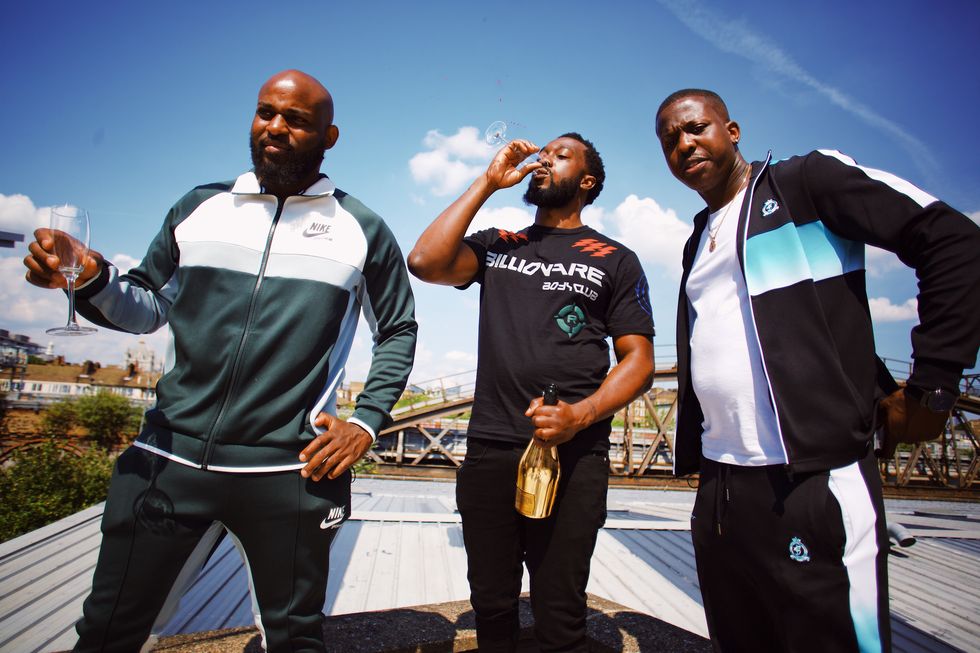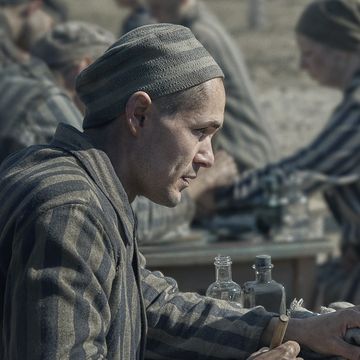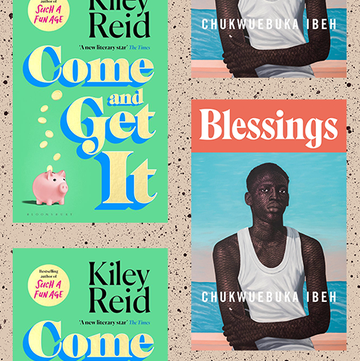In 2009, Koby ‘Posty’ Hagan launched a YouTube channel that would, he hoped, provide some exposure for the UK’s slept-on rap scene. Six years earlier, grime had hit the mainstream when Dizzee Rascal’s incandescent Boy in da Corner won the Mercury Prize. Then the money men moved in. In the same year that Hagan launched his channel, Dizzee dropped ‘Bonkers’, an EDM-rap hit that earned him his second number one single, but which, to many, sounded like a death knell for what had been the most exciting genre to emerge from the UK in more than a decade.
Grime wasn’t dead, though. Away from the charts, on the streets of Newham and Canning Town, Tottenham and Bow, UK rap music was just shifting form. And in the decade and change since Hagan posted his first video, his platform, GRM Daily, has documented the urgent, evolving sound of UK rap, hip-hop and grime, helping stars like Kano and Skepta, and underground heroes like Jammer and D Double E, reach a global audience. Today, as Stormzy puts it in a new documentary, GRM Daily is the “holy grail of Black British music.”
At first, though, it was a way for Hagan connect to something that made him feel at home. Though born in Enfield, in north London, he moved to Ghana as a child, where he ended up living for more than a decade. When he eventually came back, he settled in Canning Town, where his teenage ears fell for grime’s first wave. “It helped me get accustomed,” he says, listing Kano, Wiley and Dizzee Rascal as hallmarks of his adolescent experience, as well as pioneering UK rap artist Klashnekoff.
DIY video was symbiotic with grime – Boy in da Corner arrived just 18 months before YouTube – and the sound's rise to prominence in the underground was fuelled in part by a cluster of early documentation styles, which would also help thrust Hagan into his vocation. The earliest, Channel U, was a satellite channel that launched in 2003 and featured mostly self-shot videos by future stars including N-Dubz, Tinchy Stryder and Tinie Tempah. A year later came Lord of the Mics, a collection of iconic grime clashes hosted by Jahmek ‘Jammer' Power and Chat ‘Ratty’ Stennett, which were mostly filmed in Jammer’s basement. (The battles were only released on DVD, and Grime Daily, as it was then, began life as a channel that uploaded them to YouTube).
Hagan credits both as “massive inspirations”. “They had already filmed people that people either recognised or were familiar with, they had a story and a following,” he says. “I thought, if we filmed [rappers and artists], people would find them interesting too.” On that, GRM Daily was beaten to the punch by SBTV, which had been set up by Jamal Edwards in 2006. But even though it aired street-shot videos on its website and, later, YouTube channel, Hagan and his co-founders – Matt ‘Sketchy’ Thorne and Pierre Godson-Amamoo – saw a space for something more consistent. “I wanted to do this everyday. We realised we had to pick up the camera and do it as much as possible.” Hagan admits that timing helped, pointing out that the DVD era came to a halt at the time of GRM’s birth. Channel U not being able to adapt for early streaming platforms further widened a gap in the market, as the world transitioned into the digital era at the start of the Aughts.
By this point, Hagan was studying for a law degree. Though he enjoyed it, especially its technical aspects, a yearning for both live entertainment and music persisted. “I started being an entrepreneur and throwing this event called Candy’s,” he says. “You’d get unlimited sweets and listen to feel-good music.” Hagan's ear allowed him to spot and book early pioneers for his Candy’s nights, such as ‘The Movement’ — which included Ghetts and Wretch 32. Following an immersive post-graduate education in law school, he inevitably made a choice. “My mind was all over the place. There wasn’t space for the two worlds.”
From the outset, through, GRM Daily faced hindrances. Once established on YouTube, the first iteration was removed by the platform in 2011. “We still don’t know exactly why [we were] taken down,” Hagan says. As competitor platforms Link Up TV and SBTV soared, fear crippled the collective of GRM Daily owners, as they battled with the decision of whether to return to YouTube or not. “There was actually a rule where if you came back, your account would get deleted instantly. So we took a year and a half out.”
YouTube’s decision could be seen as a form of cultural vandalism. According to Hagan, more than 2,000 videos were lost, some of which contained early music videos from a plethora of grime acts — potentially including early Frisco and J2K projects — but ultimately, Hagan was adamant that GRM Daily had to relaunch. “Users were getting used to [YouTube] and saw the value in it. It was difficult to have our own player on our site. We kind of rebranded and put our heads down and went again as responsibly as we could.”
Reviving the platform as “Grime and Rap Music”, aka GRM Daily, the platform quickly solidified an early core offering. Establishing their own staples, such as ‘Crep Check’ (a look at the scene’s stars’ trainer collections) GRM found its identity on YouTube through exclusive features. The methodology, according to Hagan, was to “create a feature for every day of the week.” Today, multiple exclusives now exist across each day, with some of the same features being released in the same week. Hagan’s favourite of GRM’s features, ‘Daily Duppy’, had entries from rappers K-Trap and Knucks last week.
The now-classic freestyle series sees upcoming and cemented rappers' unrestrained, rapping for GRM audiences. “We always had the name ‘Daily Duppy’, but it was Raheem Bakaré made it what it is today with the graphics, the animation, he took it to the next level.” Culturally, the series has adapted over the years. In July, DJ Semtex announced that South-London based drill rapper Shaybo was the first woman to grace ‘Daily Duppy’ in its seven years of existence. To Posty, now is the time to expand in this terrain. “There’s so many talented women rappers out there now, you can’t ignore that. We have Ms Banks, Little Simz, Stefflon Don, Ivorian Doll. They are all so good and ready.”
Another plank in GRM’s legacy is the Rated awards. Conceived in 2015, the KA drinks-sponsored inaugural airing featured performances from a range of UK talent, including Kano and WSTRN. “We had an online voting award system, but the editorial team and I were approached to do a real show and tried it out.” At first, Hagan admits that they were hesitant about it lasting the test of time. “We hoped it would, but we had nothing to lose,” he says. “It worked out in the end, though.” In recent months, GRM Daily executed one of the best award shows the music industry has seen throughout the Covid-19 pandemic, emulating technology used at the BET Awards. Inspired by Megan Thee Stallion’s performance at that show, Hagan looked to replicate the artist-led performances in a similar fashion.
“We believe so much in the importance of the Rated Awards now, because of how much the artists have given us,” Hagan says. “It felt a little bit selfish, not to try with all our might to make it happen this year.” Partnering with YouTube, the Mo Gilligan and Julie Adenuga-hosted 2020 edition of the show proved successful with viewers, garnering 250,000 views to date, with Kano returning to the stage, alongside a new generation of artists including Dutchavelli and Br3yna, emphasising GRM’s trajectory.
At the turn of the decade, GRM now possesses an undisputed supremacy amongst British rap culture. But for Posty, it’s unity that prevails. That’s why the platform's upcoming documentary series is titled 'Together We Rise'. Including renowned artists like Stormzy, Ms Banks and Ghetts, the series demonstrates collaboration from its very first episode. SBTV owner Jamal Edwards features early on, celebrating Hagan and GRM Daily at large. On the widespread inclusivity, Posty clarifies that he wanted to “highlight the culture” as well as the “great people” around him at the time. “It’s important to showcase that.”
The doc feels timely in its portrayal of the development not just of GRM, but rap-originating genres in the UK. “It’s not just been a one-person, or a one-platform effort,” Hagan says. “Doing a documentary is a lot of work, it’s quite painful, but ultimately, it’s worth it.” Journalists such as Aniefiok ‘Neef’ Ekpoudom helped to interview the many artists involved in telling GRM’s story and also brought the concept to life.
‘Together We Rise’ is not the first in GRM Daily’s pivot to documentaries. The drill special ‘Terms & Conditions’ aired in February, hinting at a potential future direction of GRM Daily content. Hagan is quick, however, to temper these thoughts. “I don’t want us to just do a documentary for the sake of it. If there’s a story worth telling and we can do it, then we’ll do it,” he says.
In that sense, GRM Daily echoes the self-belief and perseverance embodied by its founder. While routinely checking on his daughter over Zoom as we wrap up, he reminiscences on his 10 years as a brand-owner. “You don’t just start things and things are automatically good,” he says. “Always stay true to why you started, not the fame, not the money, but the care for music and care for trying to make UK music the biggest thing in the region. Everything else is just a bonus.”
Together We Rise: The Uncompromised Story of GRM Daily is available on YouTube now














